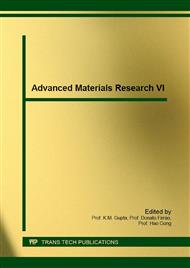p.103
p.108
p.114
p.121
p.126
p.133
p.138
p.143
p.148
Solid Oxide Fuel Cell Integrated with Supercritical Water Fueled by Methanol
Abstract:
A solid oxide fuel cell (SOFC) is known as an interesting energy conversion device because of its fuel flexibility and high efficiency. The hydrogen-rich stream is used as fuel carrier converting to generate electrical energy. A non-stoichiometric thermodynamic model based on minimum free energy was performed to predict the amount of hydrogen production via the methanol reforming under supercritical water (SCW) condition. The effects of SCW reaction temperature and water-to-methanol molar ratio on the SOFC power generation integrated with SCW reforming from methanol were investigated. The hydrogen yield, the required heat duty for a feed preheater and a SCW reactor and the SOFC power generation increase with increasing the SCW reaction temperature and the amount of water fed in SCW reactor. Under operating parameters of SCW reformer based on 1 mole/sec of methanol fed at the high temperature of 1273 K and water-to-methanol molar ratio of 5, the SOFC electrical power of 246 kW was produced with the maximum fuel utilization of 0.7.
Info:
Periodical:
Pages:
133-137
Citation:
Online since:
April 2016
Authors:
Keywords:
Price:
Сopyright:
© 2016 Trans Tech Publications Ltd. All Rights Reserved
Share:
Citation:


